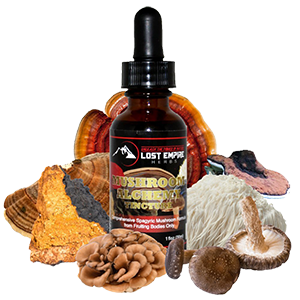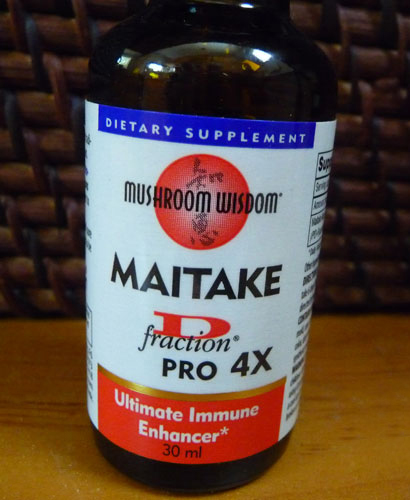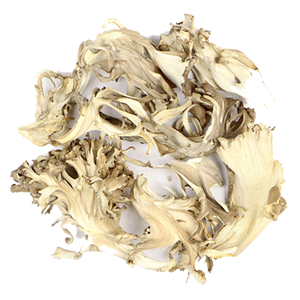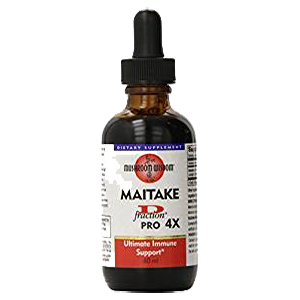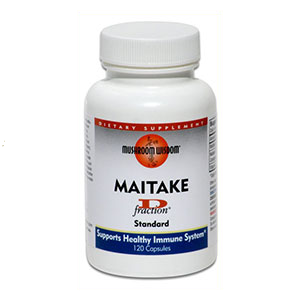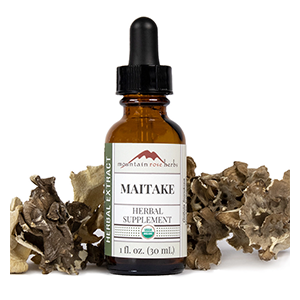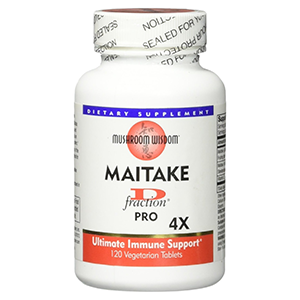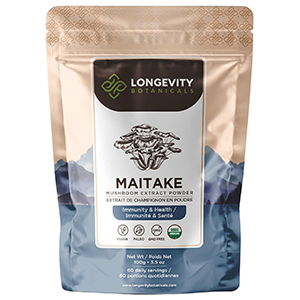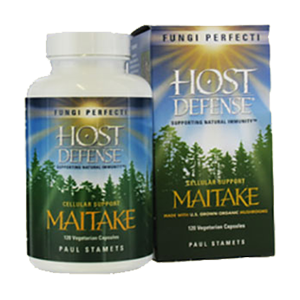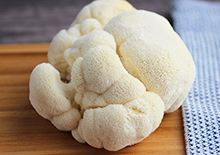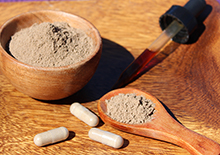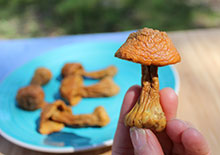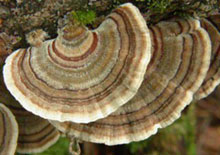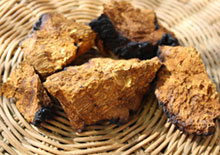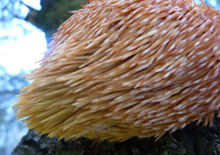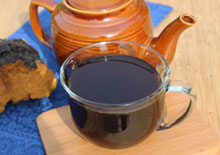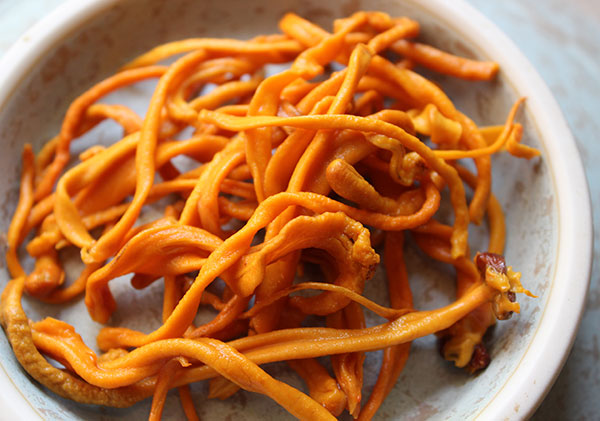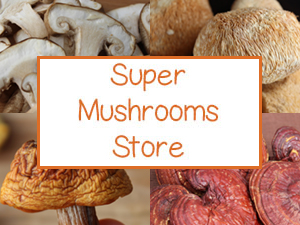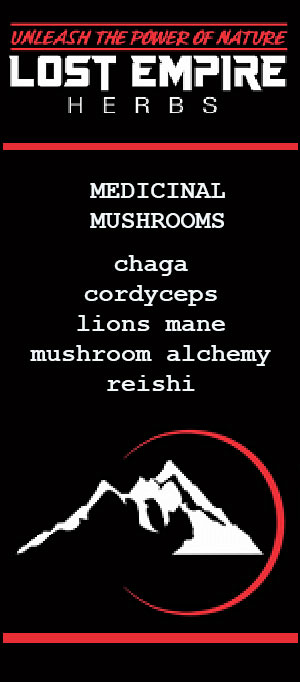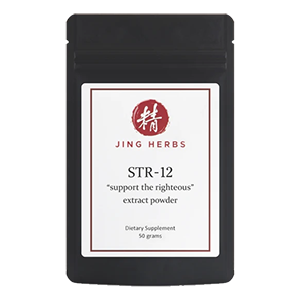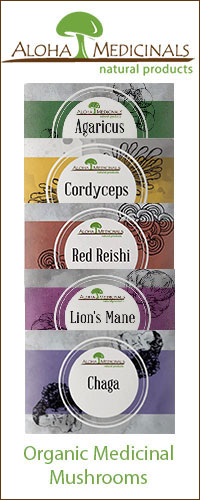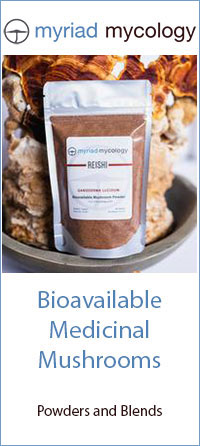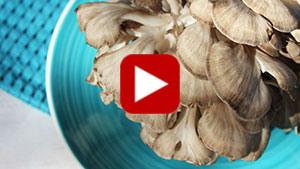- Home
- Super Mushrooms
- Maitake
Maitake Mushroom, Benefits of D-Fraction Compound
Intro | What is Maitake? | Wild and Cultivated | Benefits | Supplement Types | How to Use | Precautions | Shop
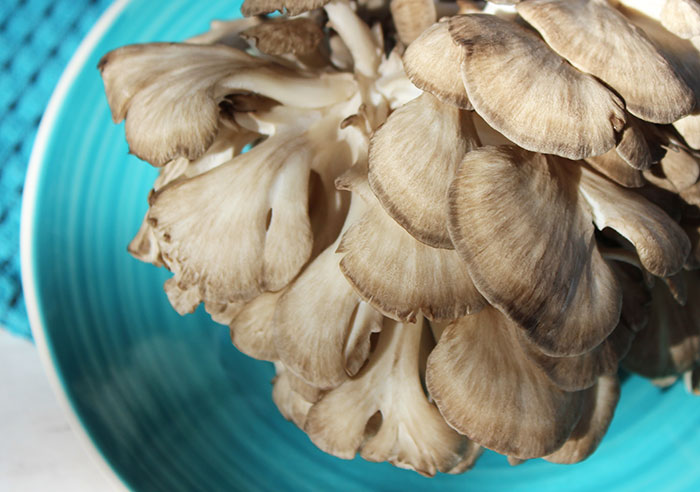
Maitake mushrooms (Grifola frondosa) are an edible fungi species that grow in large fruiting layered clusters typically at the base of trees.
Often referred to as hen of the woods, they are a full-bodied fungus resembling a large hen with fluffed out feathers sometimes weighing up to 40-50 pounds by the end of the growing season.
The fresh steamed or sautéed mushrooms are a savory edible mushroom variation with a semi-firm yet delicate texture, rich earthy umami taste and a subtle tempura shrimp-like flavor.
Table of Contents
Intro | What is Maitake? | Wild and Cultivated | Benefits | Supplement Types | How to Use | Precautions | Shop
They are utilized by gourmet chefs around the world and are a common staple mushroom ingredient in Japanese cuisine.
While maitake are traditionally used for their exceptional taste qualities, this particular species is also found to be quite medicinal in nature, similar to others like reishi, turkey tail and chaga.
It is consequently becoming increasingly more well-known for its potent array of specific "myco-nutrients" that are reported to offer added therapeutic value when consumed, especially as a dietary medicinal mushroom supplement.
What is Maitake Mushroom?
Growing wild in Japan as well as moderate climate zones of China, Europe, Canada and Northeastern United States, Grifola frondosa is a soft-fleshed polypore mushroom identifiable by its gray-brown, wavy overlapping caps, which are assembled in large clusters coming off a single branched stem.
This variety, unlike other rounded types, is mostly composed of curled, irregular, sometimes spoon or fan-shaped caps with a white underside. The fresh fungi have tender flexible pieces that are easily separated and stripped apart revealing a stringy texture.
Harvested for centuries in the wild forests of Japan, the name "maitake" comes from the Japanese language, which means 舞茸 "dancing mushroom."
This description is thought to originate from the way the ruffled-looking mushroom appears to move or "dance" and also, according to Japanese legend, refers to how those who found this prolific natural species would dance in celebration as it was highly prized and worth monetary value. (Source) Some sources report it was equal to its weight in silver.
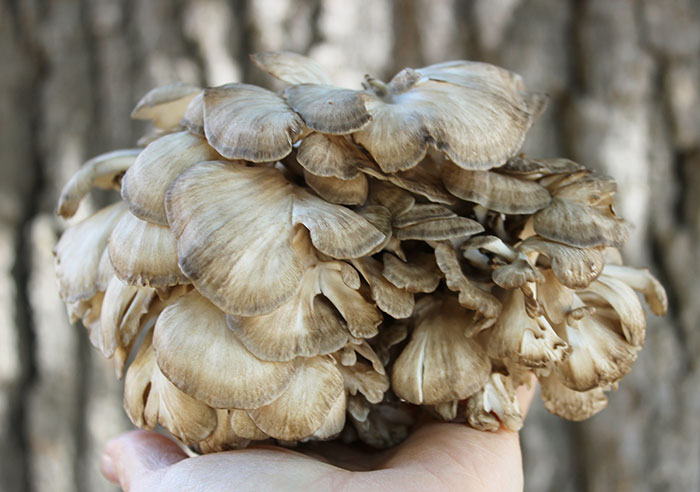
Wild and Cultivated Hen of the Woods
Also called "sheep's head" (or in Italy, it's known as "signorina"), maitake is a perennial mushroom that often grows wild in robust patches, usually at the base of certain trees, especially oak, beech or elm. It is harvested in the late summer and early fall when the fruiting body is full yet still soft and tender.
Often reappearing in the same place year after year, a mature mushroom is typically about 1/2-1 feet (or 15-40 centimeters) wide. However, in ideal conditions, maitake can grow up to 3 feet (or 91 centimeters) and weight more than 100 pounds, earning it the name "king of mushrooms".
While maitake mushrooms grow wild, they are also relatively easy to cultivate. In the past, China,
Japan and Korea were the leading commercial cultivators, mostly exporting the dried variety.
In recent times, growing and selling fresh maitake is becoming more popular worldwide. In the U.S., it can sometimes be found next to other gourmet types in produce sections and at local farmers markets.
Grifola frondosa, as a cultivated species, can be grown indoors on a substrate medium at a temperature of 55-70 °F (12-21 °C). These versions can still grow quite large in size and used like shiitake or oyster mushrooms in stews, soups, sautés or as an ingredient in numerous recipes.
Likewise, in the last several decades with the global expansion of the medicinal mushroom "industry", maitake has become one of the top varieties prepared and sold as a supplement in the form of powders, capsules, tablets and extracts. These types are believed to concentrate certain myco-nutrients and increase maitake's overall health-promoting aspects.
Maitake Mushroom Benefits
1) D-Fraction and Its Potential Immune Support
2) Influence on Blood Sugar Levels and Hypertension
Maitake D-Fraction and Its Potential Immune Support
Like many of the medicinal mushrooms, Grifola frondosa contains beta-glucan polysaccharides, which can act as dietary nutraceuticals with an immune-modulating influence. ß-glucans are generally classified as "biological response modifiers" for this reason because of their capacity to stimulate or suppress immune responses.
One maitake-specific beta-glucan that has been studied in recent years is its main active constituent known as "D-fraction". Maitake's D-fraction is comprised of unique protein-bound beta-glucans known as beta-1,3 glucan and beta-1,6 glucan (or a 3-branched ß-l,6-glucan with about 30% protein).
Although conclusive evidence is still pending, this compound has been scientifically suggested in research to be one of the mushroom's main supportive components to immune system functioning in both mice and on human cells.
Some supplement manufacturers especially concentrate the D-fraction compound using standardized extracts of the fruiting body. Depending on the strength, these can contain a certain amount of D-fraction per serving, at a standard strength or professional strength dose amounts.
It is important to do what we can to maintain a strong immune system through healthy lifestyle habits and sometimes supplemental adjuncts, like Grifola frondosa, can be a part of this overall objective.
In one study, it was shown that medicinal mushrooms have increased uptake and health benefits when consumed with a natural vitamin C source. Some mushroom products, for this reason, include small amounts of vitamin C in their extracts.
Likewise, there is also the belief that these medicinal varieties work well when blended together with other types. Supplement manufacturers therefore often have products combining them in formulas, such as Lost Empire Herbs and their Mushroom Alchemy Tincture.
Maitake's Influence on Blood Sugar Levels and Hypertension
Maitake mushroom is often on the list of helpful foods to include within a healthy diet and lifestyle protocol for its potential at balancing blood glucose levels. This stems back to earlier research on diabetic mice and rats in which it was proposed that certain fractions of the powdered fruiting body had a positive influence on glucose/insulin metabolism.
In another published report on animal testing, it is suggested that maitake mushrooms help to prevent age-related elevation of blood pressure, via the renin-angiotensin system, the hormonal system that regulates fluid balance and blood pressure.
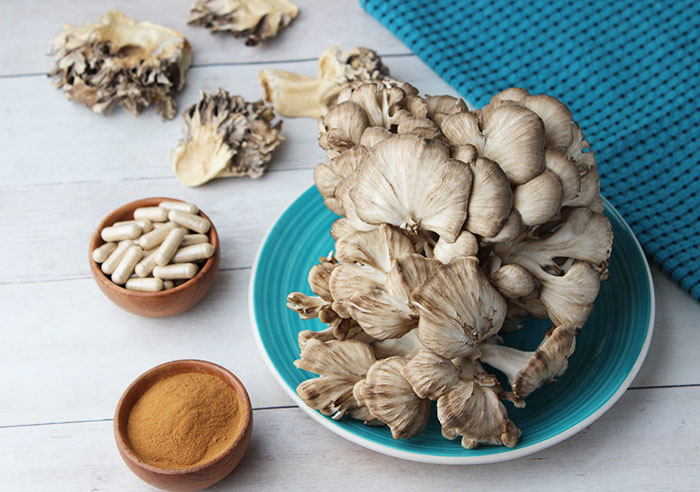
Types of Maitake Supplements
While all forms of maitake have been shown to have health-promoting components, for concentrated myco-nutrients like the D-fraction, a quality dietary supplement might be a more suitable option.
These types come in the form of powders, capsules, tablets as well as liquid and powdered extracts and can vary widely depending on what part of the mushroom they are made from and how they are prepared. Many involve a combination of the following forms and techniques.
Maitake Supplements Combinations:
- Full-spectrum powders - Usually includes the fruiting body, the mycelium and extracellular components commonly referring to enzymes, acids, antimicrobials, sterols, etc.
- Mycelium Biomass - This is the vegetative, white, thread-like mass that weaves together on the substrate medium, usually a grain (like rice) when cultivated.
- Fruiting Body - This is the actual mushroom itself, which often includes the stem, cap and sometimes the spores.
Common Preparation Methods:
- Dried Powders - Simply dried forms that have been powdered.
- Hot Water Extracts - Usually made from the fruiting body and prepared using a hot water method to release the active compounds from the cell walls of the mushroom, potentially making it more bioavailable. Can be in the form of a powder, capsule or liquid.
- Dual/Double Extraction - Uses both hot water and alcohol to extract the highest level of beneficial components as different compounds require certain methods for complete solubility.
- Standardized Extracts - Can employ proprietary methods to extract a certain percentage of active compounds.
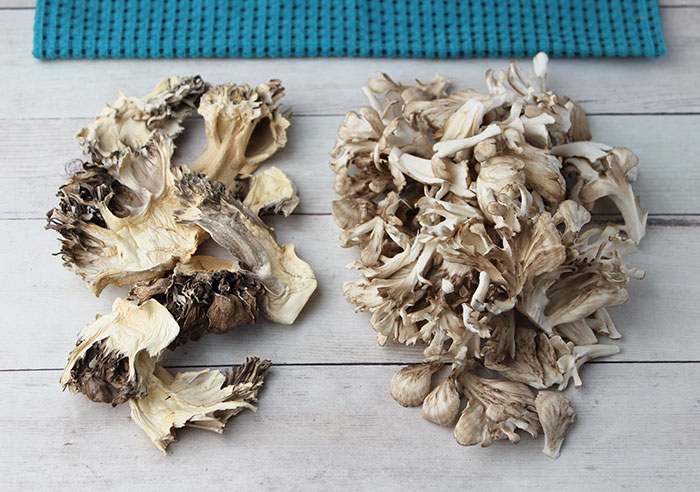
How to Use
There is nothing quite like the taste of fresh maitake. If you have access to a wild or cultivated variety, it is a very flavorful gourmet addition to soups, grains and numerous savory recipes. It is best when heated by simmering, steaming or sautéing.
Maitake is likewise available as a dried mushroom which can be soaked and chopped into cooked foods or sautéed into soup stocks for its flavor-enhancing umami taste.
While fresh and dried versions both have nutraceutical value, again, the best and most medicinally effective way to use this mushroom is as a dietary supplement, which concentrates the beneficial compounds.
There are several high-quality supplement brands to choose from and many are now organically certified. The powders or capsules can be opened and mixed into hot tea, coffee or elixir drinks.
For increased effectiveness, it may be appropriate to use the powder or liquid extracts with other medicinal mushroom varieties like lions mane, coriolus, reishi, cordyceps, shiitake, agaricus blazei and chaga.
(Try fresh or dried maitake in our vegan recipes, like our wild rice salad or quinoa recipe.)
Precautions:
Generally, medicinal mushrooms are very safe to consume for most people. You should, however, always seek the advice of a qualified health professional if you are pregnant, nursing, have a serious health condition, or are taking prescription medications.

